Unlock the Power of
Social Network
Analysis (SNA)
in Your Classroom
Introducing Sociomap, a free tool that helps educators understand the complex web of relationships within your students’ social networks. By leveraging the power of Social Network Analysis (SNA), you can gain valuable insights into the dynamics of your classroom and make data-driven decisions to support your students’ holistic development.
- Free to Use
- 100% Offline
- Compatible with Windows
What is Social Network Analysis (SNA)?

Social Network Analysis (SNA) is a method to study and analyze the relationships and interactions within a network of individuals. In educational settings, SNA can help visualize and understand the social dynamics among students by mapping out their relationships and connections.
Importance of SNA in K-12 Education
In a class of 30 or more students, it is difficult for homeroom teachers to fully grasp the diverse social networks, especially with subject bandings that divide students into different teaching groups, reducing their time together as a cohesive class unit.
SNA offers crucial insights into these dynamics. By understanding how students interact, educators can identify cliques, pinpoint isolated individuals, and optimize classroom management strategies such as seating arrangements and group assignments.

Why use Sociomap?

Completely Free to Use
Sociomap is completely free for all educators and does not require any technical expertise.

Secure Data Management
Sociomap runs fully offline, so you maintain complete control and confidentiality over your students’ data.
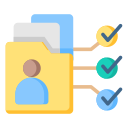
Integrate Student Data
Enrich your social network analysis by seamlessly combining it with other student attributes like gender or conduct grades to reveal a more comprehensive picture.

Uncover Valuable Insights
Identify any outliers and cliques, and create a supportive environment that fosters optimal learning and growth.
How It Works?
Find out how Sociomap works in 3 simple steps.
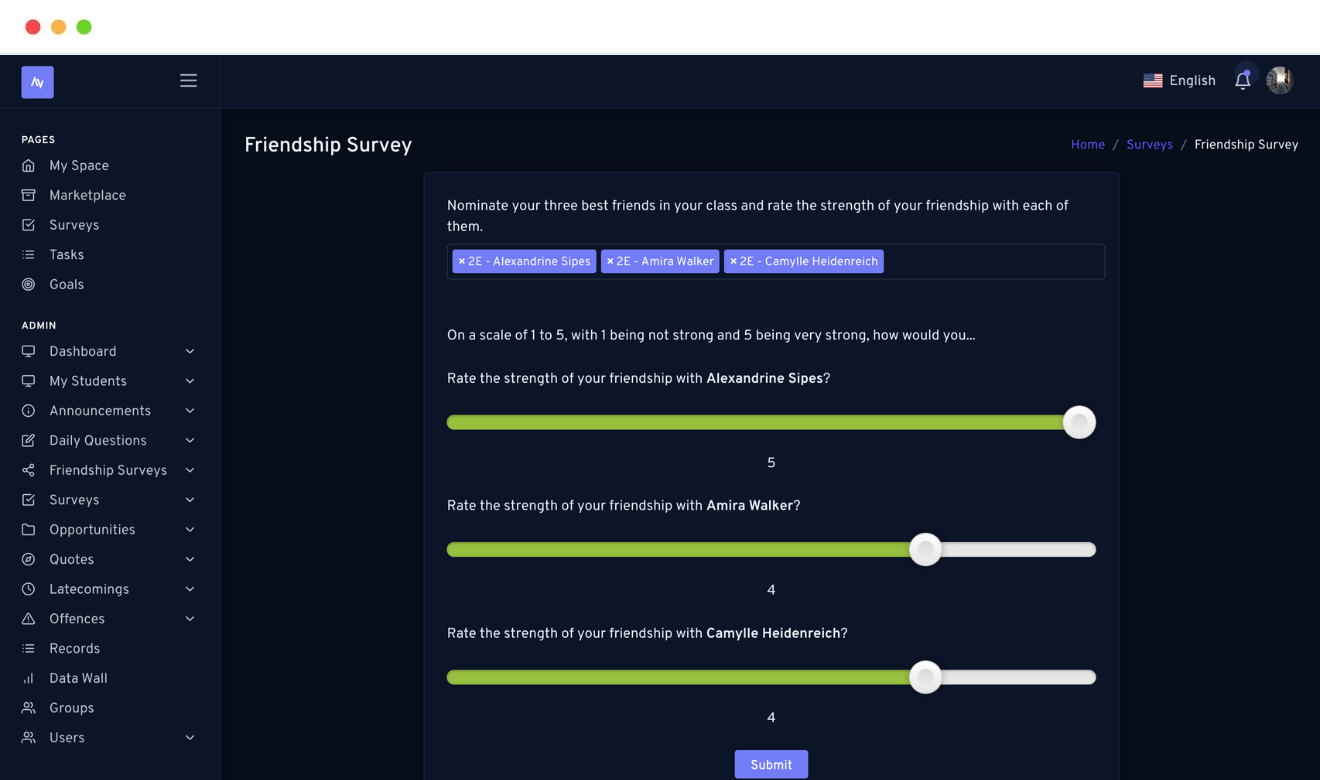
Conduct Friendship Surveys
1
Using your preferred tools like Google Forms, ask your students to identify their top 3 friends and rate the strength of their friendships on a scale from 1 to 5. You can include questions like “Who are your top 3 best friends in class?” or “Who are the top 3 friends you often hang out with after school?”. Depending on the type of question surveyed, you will uncover a different set of network and relationships.
For schools that are subscribed to our award-winning student wellness and holistic development platform, Nurture, you will be able to administer these surveys to different classes and teaching groups within just a few clicks!
Prepare Student Data
2
2
After you are done collecting your survey data, fit it into our excel templates which can be downloaded from our Sociomap desktop app.
Beyond just your survey data, Sociomap enables you to dive deeper by mapping student characteristics such as gender, conduct grades, and more. This will help you uncover deeper insights like interaction patterns between boys and girls or the presence of any cliques among students with poor conduct grades.
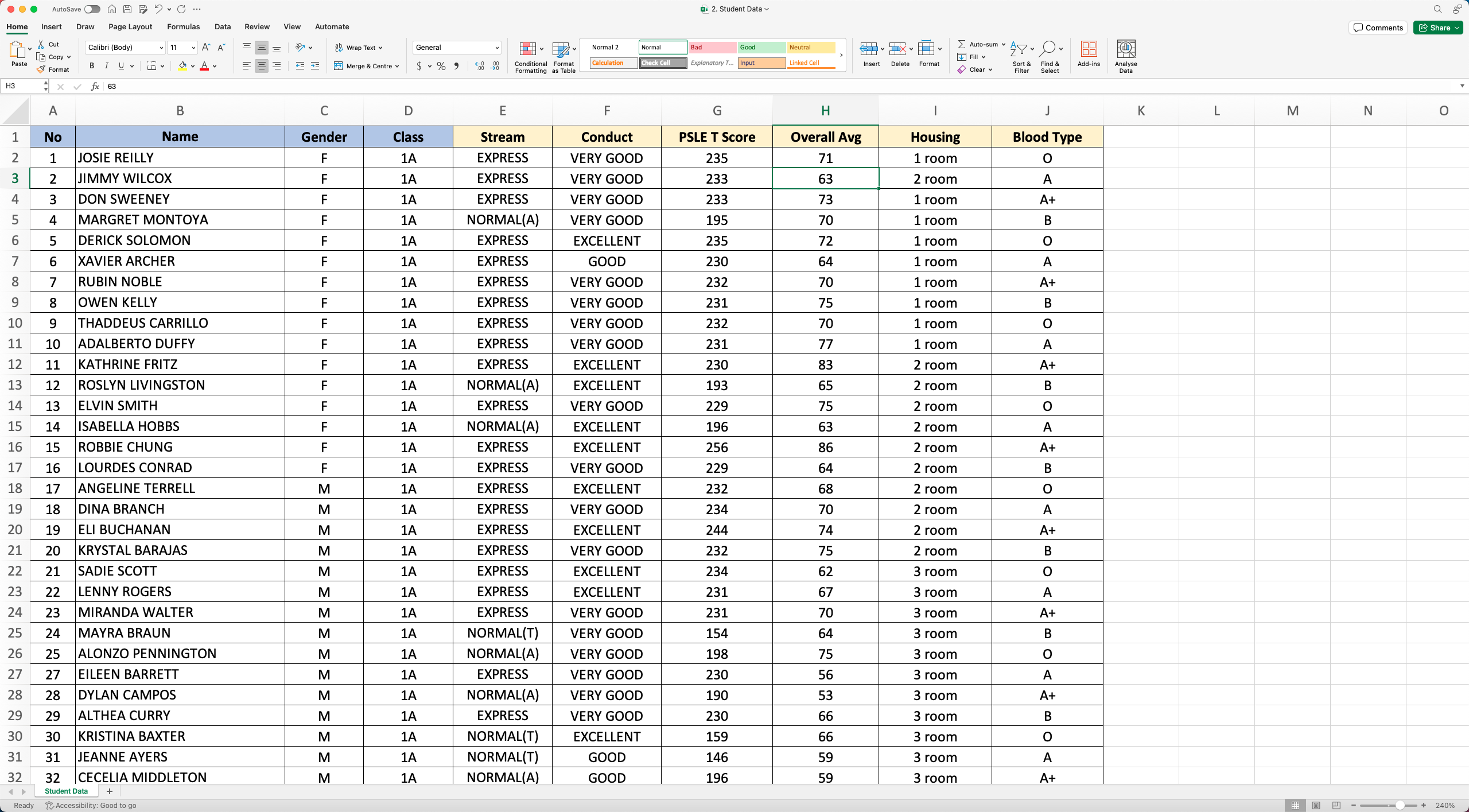
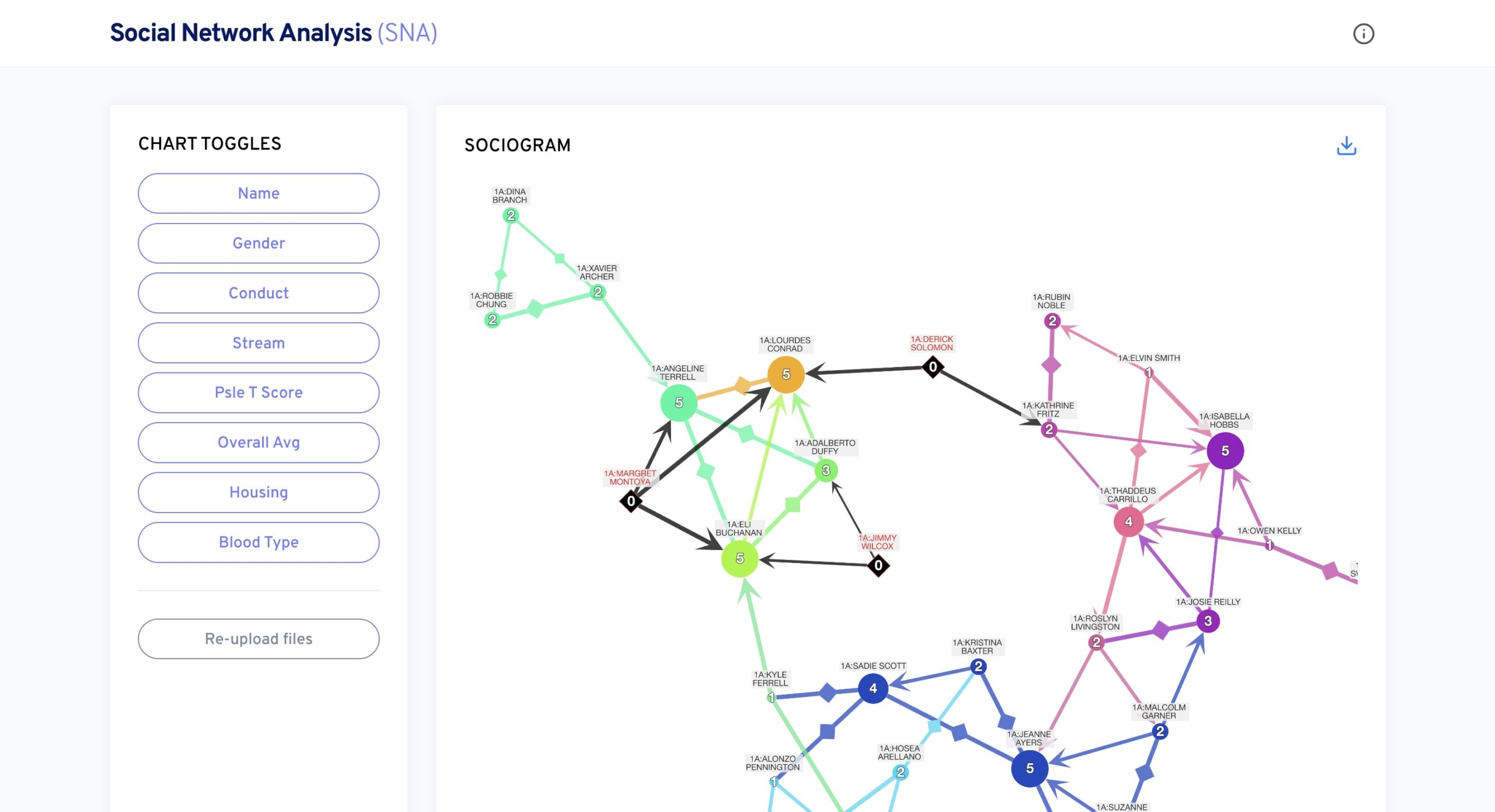
Upload & Analyze the Data
3
Upload your Survey Responses and Student Data Excel files into Sociomap to generate interactive sociograms and key metrics, such as centrality measures.
Sociomap makes it easy to interpret network diagrams and export them as images. You can use these insights to optimise students’ learning environments such as rearranging their classroom seating to break up any cliques or creating buddy systems and group activities to incorporate any outliers.
How would this benefit me as a teacher?

Foster a Supportive Classroom Environment
Identify potential social exclusion, cliques, and relationships that may impact students’ emotional well-being and academic performance. With Sociomap, you can create a more inclusive and supportive learning environment.

Optimize Student Grouping and Collaboration
Analyze social connections to inform group assignments, promoting effective teamwork, and minimizing conflicts. This leads to a more productive and harmonious learning experience.

Early Detection and Support
Detect students who may be struggling socially or academically, enabling early intervention and targeted support. This helps to address issues before they escalate, ensuring students receive the help they need.

Data-Driven Decision Making
Gain valuable insights into your students’ social dynamics, enabling data-driven decisions that enhance your teaching strategies, student outcomes, and overall school community.
Data Security
Our offline SNA app focuses on data security and ease of use. Designed for educators of all technical levels, it keeps data securely on your own laptop, with no cloud uploads. This ensures privacy and compliance with data protection regulations, giving you complete control over your information.
Our app simplifies the analysis of classroom social networks, providing valuable insights into student interactions while maintaining data security. Our commitment to offline data management highlights our dedication to offering safe, effective tools that enhance learning environments through SNA.

Trusted by leading K-12 Schools
Leading public and private K-12 schools have successfully adopted Sociomap, resulting in improved student engagement and data-driven insights that inform educational strategies in their esteemed institutions.
Download Sociomap
Enter your information below to download our free Sociomap desktop app.
Frequently Asked Questions.
Find answers to your questions about the use of Sociomap.
Ready to get started?
Demystify your student interactions and improve their learning outcomes today.
- Dive Analytics
- Sociomap
Understand
social interactions
within classrooms.
Social interactions amongst students are often a crucial and under-explored aspect. Deep dive and understand how social relationships form in your classrooms to improve learning outcomes.
Why choose our Social Network Analysis (SNA) module?
Social Network Analysis (SNA) helps to demystify student interactions & relations within and beyond classrooms. Our user-friendly interface allows teachers of all backgrounds to easily administer surveys to different classes and groups within just a few clicks. Interactive sociograms and key metrics such as centrality measures will also be automatically generated real-time, so you can focus on the insights and interventions.
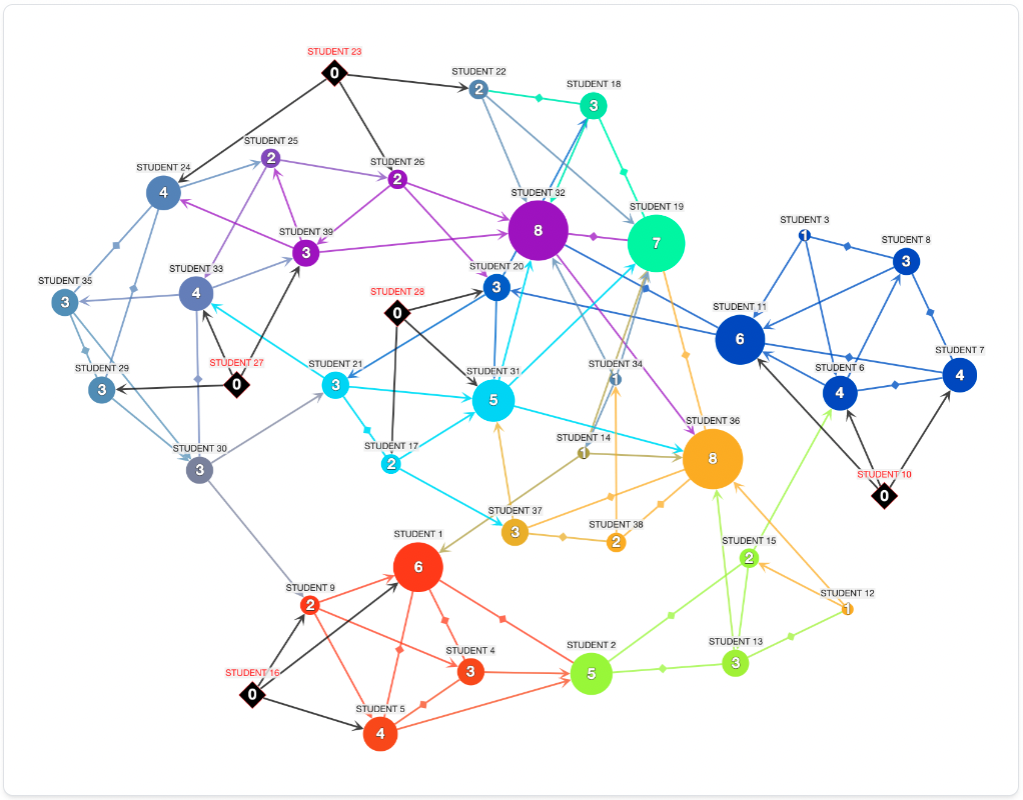
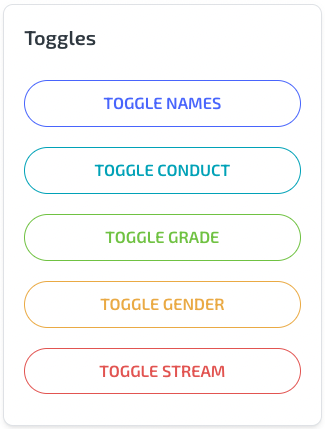

Importance of Social Network Analysis (SNA) in Education
In a typical class size of 30 or more students, it is challenging for teachers to fully comprehend the different social network structures. Using SNA, teachers can better understand how their students are interacting and support their individual learning and development.
With better interpersonal communication skills and social interactions, it is a great way for students to foster better relationships, gain self-confidence and not feel isolated in class.
Demystify student interactions and relationships
Address concerns to relating classroom bullying, outcasts, social mixing and many more.
Cliques & Outliers
Identify the presence of cliques and students who might be outcasted through interactive sociograms.
Map Student Attributes
From gender to conduct grades, overlay different student attributes to reveal hidden patterns and valuable insights.
Real-time Analysis
Deep dive into centrality measures and cut through noisy data, so you can focus on parts of the network that needs attention.
Automated Reports
Easily share reports to respective teachers to help them gain better understanding of their classroom dynamics.


Understand student relationships
Easily administer social network analysis surveys to understand student friendship ties and dynamics across different classes and groups. Map different student attributes to gain a deeper discernment on their connections and tailor your questions to uncover different insights and act on real data to make more informed decisions.
Identify Cliques & Potential At-risk Students
Through our interactive sociograms and deep dive analysis, teachers can easily identify any potential student cliques and outliers who may be isolated within their class or at risk of being bullied. Often, these students require more attention to assimilate their peers and teachers can provide early intervention where necessary.
Our intelligent platform also provides recommendations and intervention strategies to support teachers in providing more personalised care and attention for students. Some examples include, targeted tutoring, collaborative learning and peer-led study groups.





